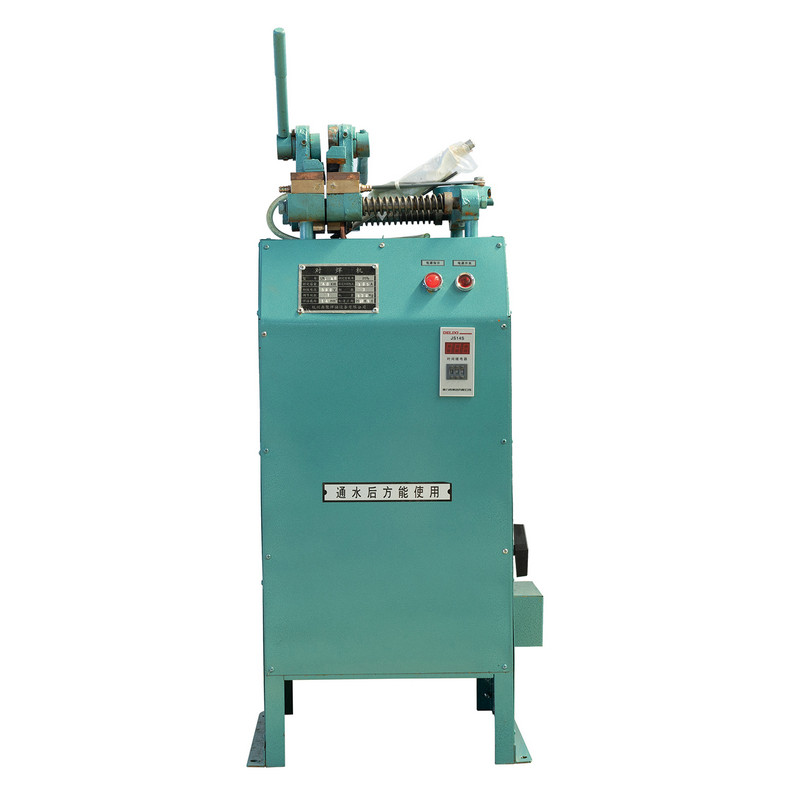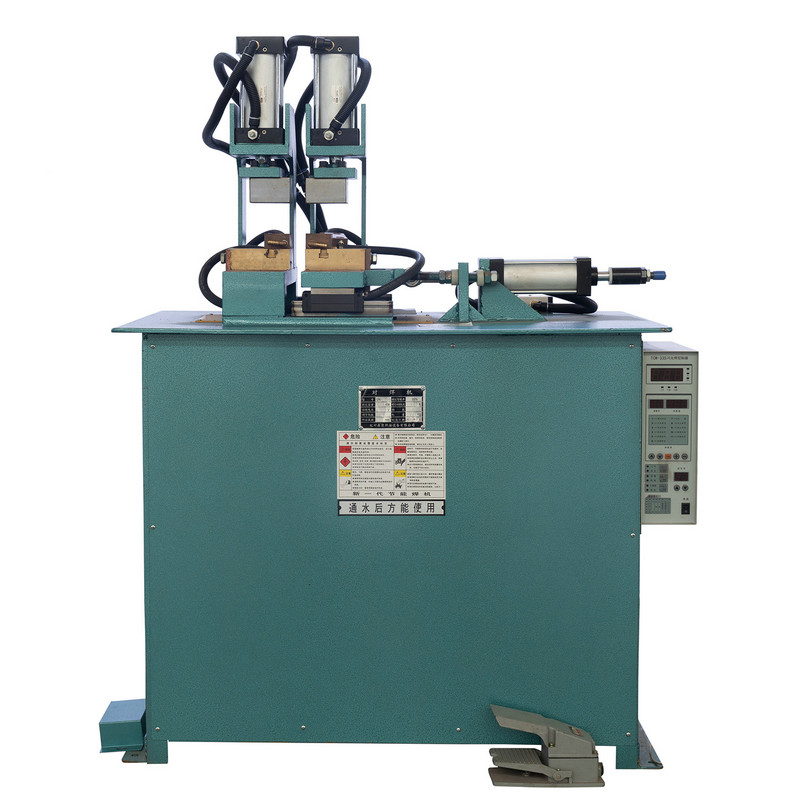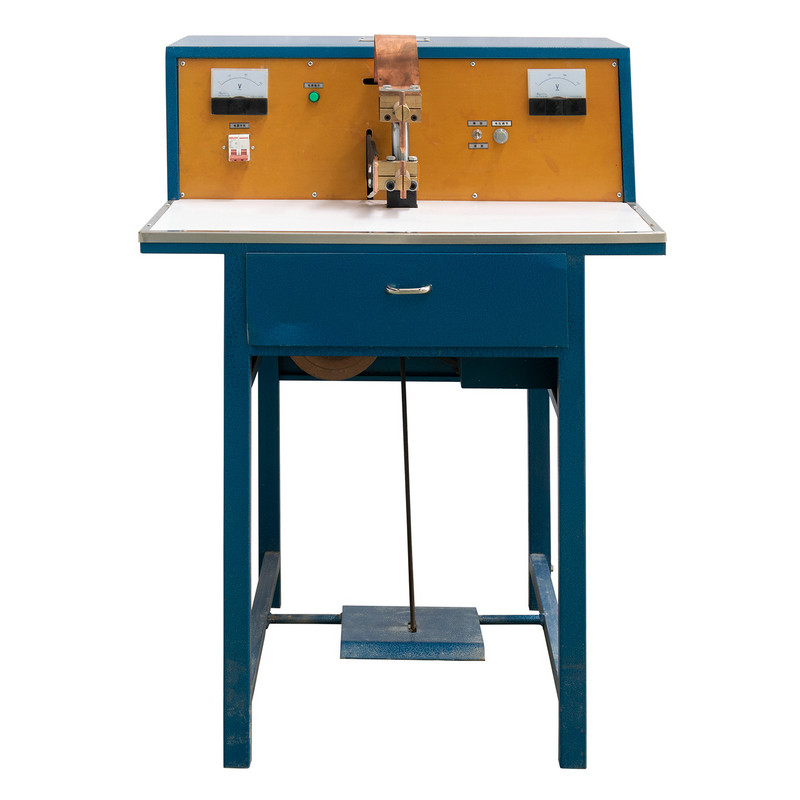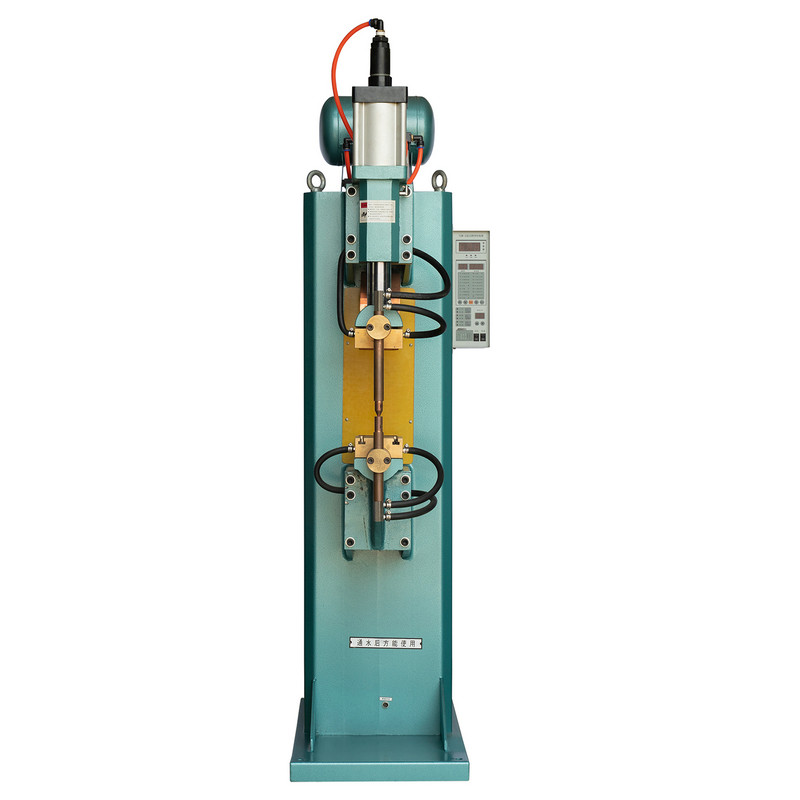The pursuit of strong, clean, and reliable metal joins is a fundamental requirement across countless projects, from intricate jewelry design and custom electronics to scale model building and precision instrument repair. While many joining methods exist, spot welding stands out for its speed, efficiency, and the unique benefits it offers for specific applications. For enthusiasts, small-scale manufacturers, and research and development departments, the challenge has often been accessing this technology in a practical, benchtop format. This is where specialized equipment like the dm desktop pedal spot welding machine enters the picture, offering an industrial-grade process in a compact and accessible package.
Understanding the Core Principle of Spot Welding
At its heart, spot welding is a resistance welding process. It operates on a straightforward yet highly effective principle: the generation of heat through electrical resistance. The process involves passing a significant electrical current through two or more overlapping metal workpieces for a short, precisely controlled duration. This current is concentrated through two opposing electrodes, typically made of a durable, high-conductivity material like copper alloy.
The key to the process is the resistance encountered by the electrical current. The metals being joined have a higher electrical resistance than the copper electrodes. As the high current forces its way through the point of contact between the two workpieces, this localized resistance converts electrical energy into thermal energy, generating intense heat extremely rapidly. This heat is sufficient to melt the metal, forming a small molten “nugget” at the point of contact between the sheets. Once the current flow is stopped, the electrodes, which are also often water-cooled in larger systems to maintain their shape and properties, help to draw heat away from the weld zone. This allows the molten nugget to solidify under pressure, creating a strong, fused weld joint. The entire cycle—electrode placement, application of force, current flow, and hold time—often takes less than a second. The dm desktop pedal spot welding machine miniaturizes this exact industrial process, bringing its advantages to the desktop environment.
Key Components and Features of the Desktop System
A desktop pedal-operated spot welder is an integrated system comprising several critical components that work in unison. Understanding each part is essential for safe and effective operation.
The most visible components are the welding arms and electrodes. These are the precision instruments that deliver force and current to the workpiece. The arms are designed to provide a specific throat depth, determining the maximum distance from the edge of a workpiece that a weld can be made. The electrodes are interchangeable, allowing users to select different shapes (pointed, domed, flat) to suit specific material types and desired weld marks. Maintaining clean, properly shaped electrodes is paramount for consistent weld quality, as deformation or contamination can lead to poor electrical contact and inconsistent results.
The heart of the machine is the control system and transformer. This subsystem is responsible for the most critical welding parameters: weld current and weld time. Unlike simple, uncontrolled units, a sophisticated machine like the dm desktop pedal spot welding machine features an adjustable digital controller. This allows the operator to dial in the exact amperage (current) and the duration of current flow (time in milliseconds) required for the specific material thickness and type. This precise control is what separates a capable machine from a rudimentary one, as it enables fine-tuning to avoid common issues like insufficient penetration or excessive spatter and burn-through.
The foot pedal is the interface for operator control. It serves a dual function. First, it mechanically actuates the welding arms, bringing the electrodes together with a consistent and repeatable force. This force is crucial as it ensures good electrical contact and forges the molten metal together under pressure. Second, the pedal typically houses a switch that initiates the weld cycle once sufficient force has been applied. This two-step action ensures the electrodes are correctly positioned and clamped before energy is delivered, promoting safety and weld consistency.
Finally, the base unit and housing contain the transformer, electronics, and cooling systems. The robust construction of the base ensures stability during the pedal actuation, preventing the machine from moving and compromising a weld. Many units incorporate internal air cooling or provisions for external water cooling loops for the electrodes, which is essential for maintaining performance during extended welding sessions and protecting the longevity of the components.
Ideal Applications and Material Considerations
The dm desktop pedal spot welding machine is not intended for joining large structural steel plates. Instead, it excels in a realm defined by delicacy, precision, and small-scale production. Its applications are diverse and often found in specialized fields.
The electronics industry relies heavily on this technology for the assembly of battery packs, particularly those using nickel strips to connect lithium-ion or nickel-metal hydride cells. The ability to create a low-resistance, strong metallurgical bond without introducing excessive heat to the sensitive cell body is critical. Similarly, the machine is used for attaching terminals, connectors, and shielding cans to printed circuit boards and small chassis where soldering is impractical or would induce thermal stress.
Jewelers and metalsmiths working with fine metals find immense value in a desktop spot welder. It is ideal for assembling chain links, setting findings, joining wire forms, and building intricate pieces from sheet metal without the need for solders and fluxes, which can mar the surface finish or require extensive cleanup. The process leaves a minimal, often hidden, weld mark.
The model-making community, including those building radio-controlled vehicles, architectural models, and dioramas, uses these machines to construct detailed metal frameworks, body panels, and components from materials like photo-etched brass and nickel silver. The scale of these projects is a perfect match for the machine’s capabilities.
Hobbyists and repair technicians use it for a multitude of tasks, from fixing kitchen utensils and wire baskets to creating custom solutions for robotics and drones. Essentially, any scenario involving the overlapping joining of thin, conductive metals is a candidate for spot welding.
Material compatibility is a fundamental aspect of successful spot welding. The process works best with metals that have a relatively high electrical resistance and good thermal conductivity.
- Nickel and Nickel Alloys: Perhaps the most commonly welded material on these machines, especially in the form of strips for battery assembly. It welds cleanly and consistently.
- Stainless Steel: Various grades of stainless steel are excellent candidates, offering strong, corrosion-resistant welds.
- Low-Carbon Steel: While it can be welded, it may require more current than some alloys due to its lower resistance. Galvanized steel requires specific parameters to burn through the zinc coating without excessive electrode contamination.
- Copper and Brass: These are more challenging due to their very high thermal and electrical conductivity. They require very high current levels for a very short time to overcome the rapid heat dissipation. Success with pure copper is often limited with smaller desktop machines.
- Aluminum: Welding aluminum is notoriously difficult on all but the most specialized spot welders due to its extremely high conductivity and rapid formation of an oxide layer. It is generally not recommended for standard desktop units.
A simple table can help illustrate the general weldability of common materials:
| Material |
Weldability on Desktop Units |
Key Considerations |
| Nickel Strip |
Excellent |
Primary application, easy to achieve consistent results. |
| Stainless Steel |
Excellent |
Strong, clean welds; ideal for models and instruments. |
| Low-Carbon Steel |
Good |
May require higher current settings; surface finish matters. |
| Brass |
Fair |
Requires high current and precise timing; electrodes can stick. |
| Copper |
Difficult |
Very high current needed; results often inconsistent. |
| Aluminum |
Very Difficult/Poor |
Not recommended; requires specialized AC or MFDC technology. |
Operational Best Practices and Safety Protocols
Achieving optimal results with a dm desktop pedal spot welding machine requires a methodical approach centered on preparation, parameterization, and safety.
Material preparation is the first and often most overlooked step. The surfaces to be welded must be clean and free of non-conductive contaminants such as paint, oil, grease, thick oxidation, and corrosion. These layers act as insulators, dramatically increasing the electrical resistance at the surface and preventing proper current flow and nugget formation. Abrasives or chemical cleaners can be used to achieve bright, clean metal at the weld points.
Parameter development is critical. There is no universal “perfect setting.” The optimal weld current and time are a function of material type, material thickness, and electrode tip size. The best practice is to always begin with a lower power setting and shorter time on scrap pieces of the exact same material you intend to weld. Gradually increase the energy in small increments until a strong weld is achieved. A good weld will be strong and have a slight indentation from the electrodes. Signs of insufficient power include a weak bond that easily peels apart. Signs of excessive power include severe spattering, a large and messy weld nugget, deep electrode indentation, and burn-through of the material.
Routine maintenance ensures consistency and extends the machine’s life. Electrode dressing is the most frequent task. Over time, electrode tips will deform, mushroom, and become contaminated with oxide scale from the workpieces. This increases the contact area, reducing current density and leading to weak welds. Tips must be regularly filed or ground back to their original shape and kept clean with an abrasive pad. Additionally, users should periodically check all electrical connections for tightness and ensure the moving parts of the welding arms are clean and lubricated according to the manufacturer’s instructions.
Safety must never be an afterthought. While the dm desktop pedal spot welding machine is a desktop unit, it operates using high electrical currents and generates significant heat and sparks.
- Eye Protection: Always wear safety glasses or a face shield to protect against ejected spatter or debris.
- Skin Protection: Wear gloves to protect hands from heat and sharp metal edges. Long sleeves are advisable to protect arms from UV radiation and sparks.
- Fire Safety: Keep the work area clear of flammable materials (paper, solvents, cloth). Have a fire extinguisher rated for electrical and metal fires readily accessible.
- Ventilation: The process can produce fine metallic fumes and ozone. While less than with arc welding, operating in a well-ventilated area or using fume extraction is a recommended practice for respiratory health.
- Electrical Safety: Ensure the machine is properly grounded. Do not operate with wet hands or in a wet environment. Disconnect power before performing any maintenance or changing electrodes.
Advantages and inherent Limitations
The decision to integrate a dm desktop pedal spot welding machine into a workshop is best made with a clear understanding of its strengths and its boundaries.
Its primary advantages are significant. It creates strong, metallurgical bonds without the need for consumables like solder, rod, or gas. This makes the process clean and cost-effective over time. The speed and efficiency are unparalleled for suitable applications; a weld can be completed in a fraction of a second, making it ideal for projects requiring multiple repeated welds. The minimal heat-affected zone (HAZ) is a major benefit for working near heat-sensitive components, as the intense heat is highly localized and brief. The process is relatively easy to learn compared to other forms of welding, with mastery coming from systematic parameter development rather than extensive hand-eye coordination. Finally, the clean, flux-free joins require no post-process cleaning, which is a common requirement with soldering and brazing.
However, the limitations are equally important to recognize. The most significant constraint is material thickness. Desktop machines are designed for thin gauges, typically excelling with materials from 0.05mm up to around 1-2mm, depending on the material’s properties. Attempting to weld material that is too thick will result in poor penetration and weak joints. The process is largely restricted to overlapping joints; it cannot create butt or edge welds. Access to both sides of the workpiece is mandatory for the electrodes, which can limit design options. As discussed, material conductivity is a major factor, making highly conductive metals like copper and aluminum challenging or impossible to weld effectively. Finally, while the weld itself is strong, it can leave a visible indentation or mark on both sides of the workpiece, which may not be desirable for certain aesthetic applications.
Conclusion: A Specialist Tool for Precision Work
The dm desktop pedal spot welding machine is a powerful and precise tool that democratizes an industrial joining process. It is not a general-purpose welder for all tasks, but rather a specialist instrument designed for a specific range of applications involving thin, conductive metals. Its value proposition lies in its ability to produce fast, clean, strong, and consistent welds without consumables in a compact and operator-friendly format.
For the electronics engineer assembling battery packs, the jeweler crafting intricate pieces, the model builder constructing a detailed metal frame, or the hobbyist seeking a robust joining method, this machine can be a transformative addition to the workshop. Success hinges on understanding the principles of resistance welding, carefully selecting materials appropriate for the machine’s capabilities, and dedicating time to developing a disciplined approach to preparation, parameter selection, and maintenance. When used within its designed parameters, the dm desktop pedal spot welding machine proves to be an indispensable tool for precision metal joining, bridging the gap between industrial capability and desktop convenience.









